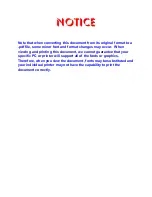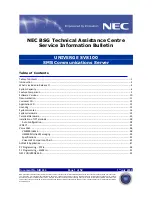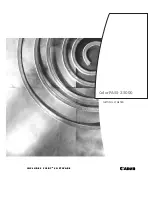
4.5.2 Network (continued)
Subnet Mask –
A 32-bit number that is used to determine which part of the IP
address is the network portion and which part is the host portion. When DHCP is
enabled this field will be dimmed. The iServer’s default Subnet Mask is
255.255.255.0
. Consult with your IT department for obtaining a subnet mask.
Gateway Address –
This points to the router that forwards traffic to a destination
address outside of the subnet on which the iServer resides. This is the IP address of
the router which functions as a gateway. When DHCP is enabled this field will be
dimmed. The iServer’s default Gateway address is
0.0.0.0
. Consult with your IT
department for obtaining a gateway address.
DNS Address –
In order to use the iServer’s DNS feature, the DNS server on your
network must be configured. That allows the iServer to use a host’s domain name to
access the Ethernet node. The iServer plays the role of a DNS client, in the sense
that the iServer will actively query the DNS server for the IP address associated with
a particular domain name. When DHCP is enabled this field will be dimmed. The
iServer’s default DNS address is
0.0.0.0
. Consult with your IT department for
obtaining a gateway address.
Host Name –
If the DHCP is enabled the iServer will send this name to the DHCP
server. This name is used so the iServer can be accessed based on a specific name
instead of an IP address. For example, instead of using
http://192.168.1.200
(IP
address), you would use
http://eit0a0b
or any name up to eleven alphanumeric
characters. The default Host Name for an iServer is "
eit
" followed by the
last four
digits
of the MAC address of that particular iServer.
On Windows servers where the DHCP and DNS are separate functions it’s
very important to configure the DHCP server to communicate with the DNS in
order for the iServer’s Host Name to correctly respond. If you cannot access
the iServer using its Host Name, please contact your network administrator to
make sure the DHCP and DNS servers are linked together.
Protocol –
It’s the network protocol the iServer communicates with the Ethernet
Network. Options are
TCP, UDP,
and
ModbusTCP
. The default is
TCP
.
Web Server Port –
The default port is
80
. This is the primary port number for the
HTTP protocol used for communication between internet browsers and web
sites/web servers. Web servers open this port then listen for incoming connections
from web browsers. Similarly, when a web browser is given an IP address (like the
iServer’s IP address), it assumes that the iServer’s web server is listening for
connections on port 80.
If this port is changed to anything but 80 then on the browser the new port number
must be indicated with a colon (
:
) after the IP address. For example, if the Web
Server Port is changed to 500, you will then need to type
http://192.168.1.200:500
on the browser to access the iServer’s web server.
One of the applications where the Web Server Port number may need to
change is when users want to access the iServer’s web server from outside
the local area network (i.e. Internet). By setting up “Port Forwarding” inside a
router that is the gateway to that local area network this task can be
accomplished. “Port Forwarding” technique uses the Web Server Port
number to forward the Internet connection to the iServer on the LAN.
17
Summary of Contents for C4EIT
Page 2: ......
















































